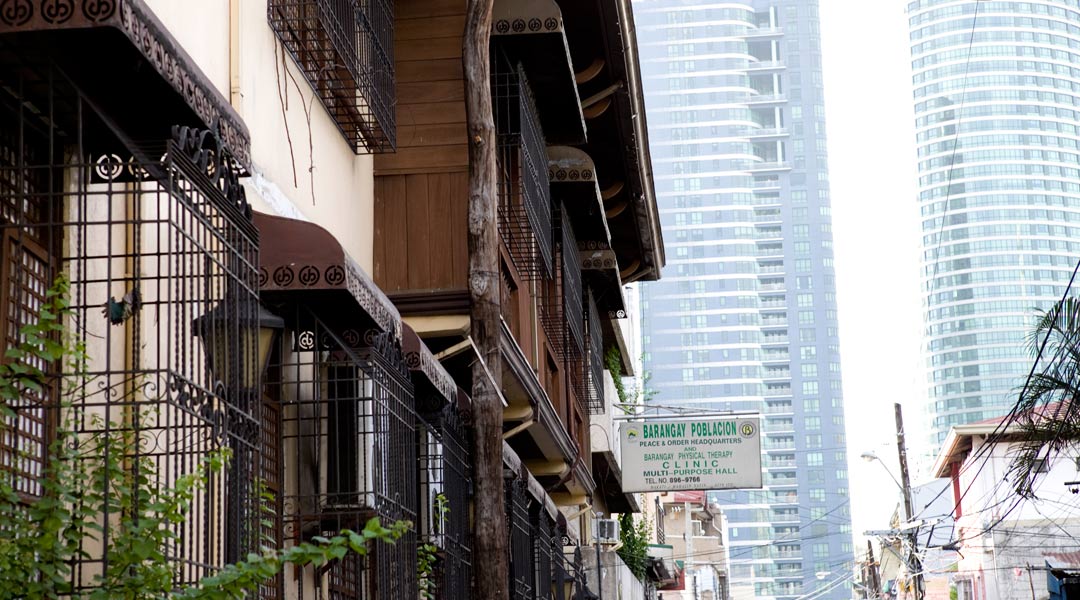
Pobs before the pubs: Poblacion heritage you need to know
Makati’s northern boundary lies along the shores of the Pasig River. In colonial times, waterfronts were typically busy areas, and Makati’s waterfront played a role in the establishment of the town’s urban center.
Historic photos indicate that a short sloping road connected Makati’s Pasig waterfront to a hilltop church. This waterfront area is known today as Poblacion Park, and the church site, formerly called Buenavista Hill, is where St. Peter and Paul Church stands today. Originally built around 1620, the church on Buenavista hill, then known as San Pedro y San Pablo church, was destroyed by the British and rebuilt in 1849.
The waterfront was a place for congregation. It contained public facilities such as the town hall and the market. Fittingly, the Casa Hacienda, a wood and stone commercial structure owned by the Zobel de Ayala family, once existed on this waterfront. The Casa Hacienda building housed the offices of Ayala y Compania, the forerunner of Ayala Corporation that is essentially the commercial and residential developer of modern Makati.
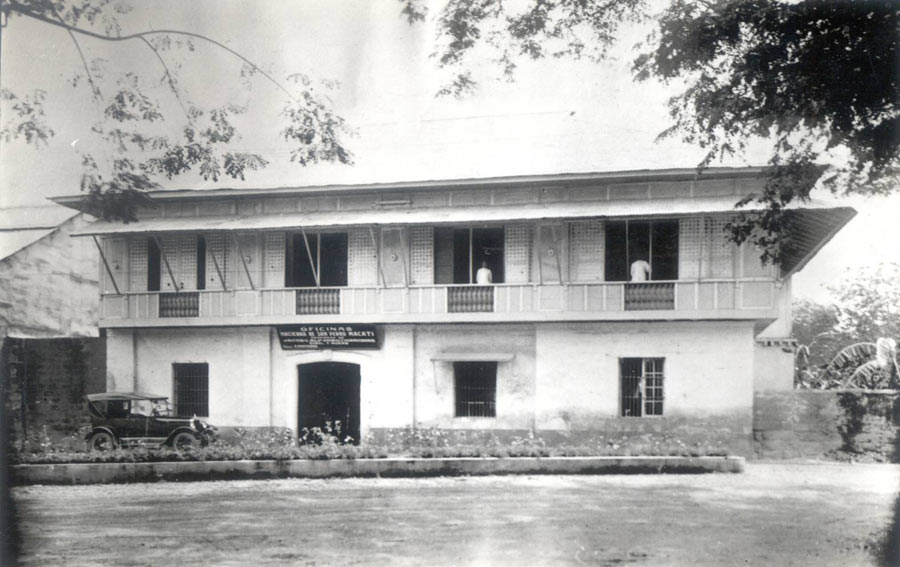
Initially, only a few summer houses belonging to elite residents graced the banks of the Pasig. The residential houses of a growing town eventually started to fill the space between the church and the waterfront. Eventually, the residences, church, municipal hall and commercial facilities near the waterfront completed the cast of urban amenities that makes for a poblacion or town proper. Today, the site and its surrounding neighborhood are called Barangay Poblacion.
READ MORE: Maestranza to become creative hub as Intramuros eyes UNESCO Creative Cities list
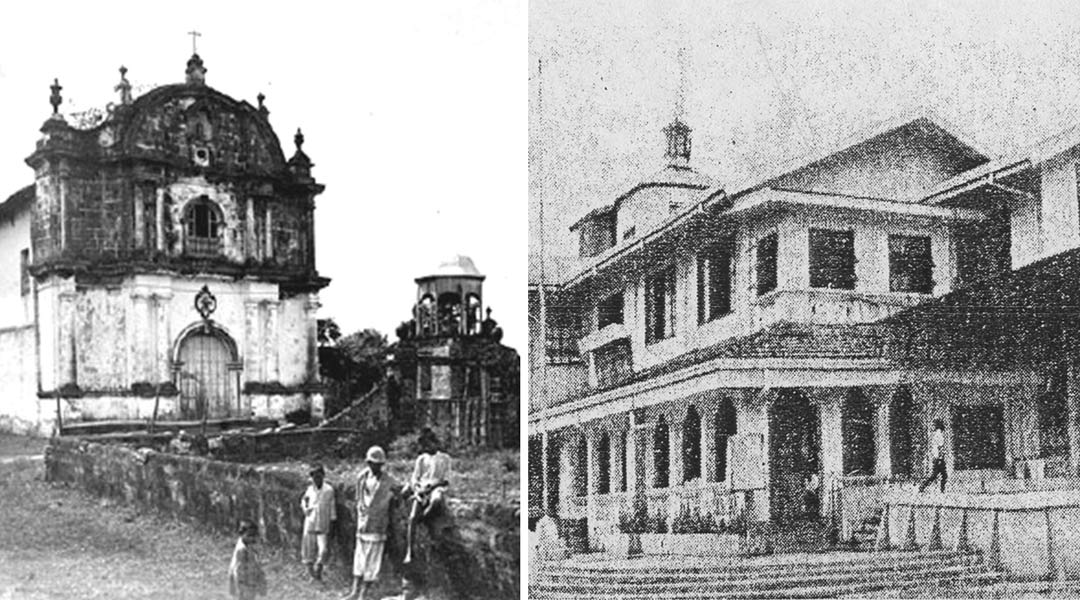
Present Situation
Poblacion is one of Makati’s 33 barangays. Much of the old community beside the baroque St. Peter and Paul parish church has been maintained. Today, this old community with its low-density structures is surrounded by the modern developments of Rockwell, buildings on Makati Avenue and the City Hall.
The post-war houses are primarily from the 1960s and 70s. In spite of the passing of years and changing architectural trends, these houses have retained their vintage look. Ancestral homes constructed from the late 1800s to the 1930s constitute about 10 percent of the total structures in the area.
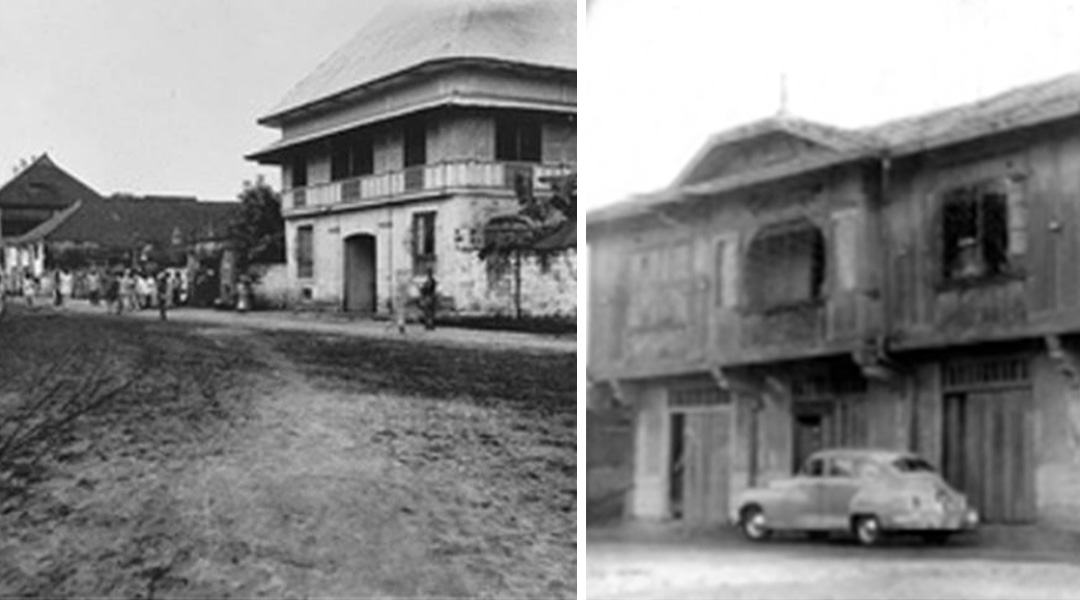
Today’s Museo ng Makati near the river is an iconic public building. Originally, it was a two-story public facility that replaced the municipal hall. Due to its old world façade and dramatic location on J.P. Rizal Street, the Museo is one of Makati’s important heritage structures today. These structures of the Makati poblacion reflect an urban setting that, although basic and modest in scale, collectively evolved to create a small town that conveys the heritage form of the place before Makati transformed into a modern city.
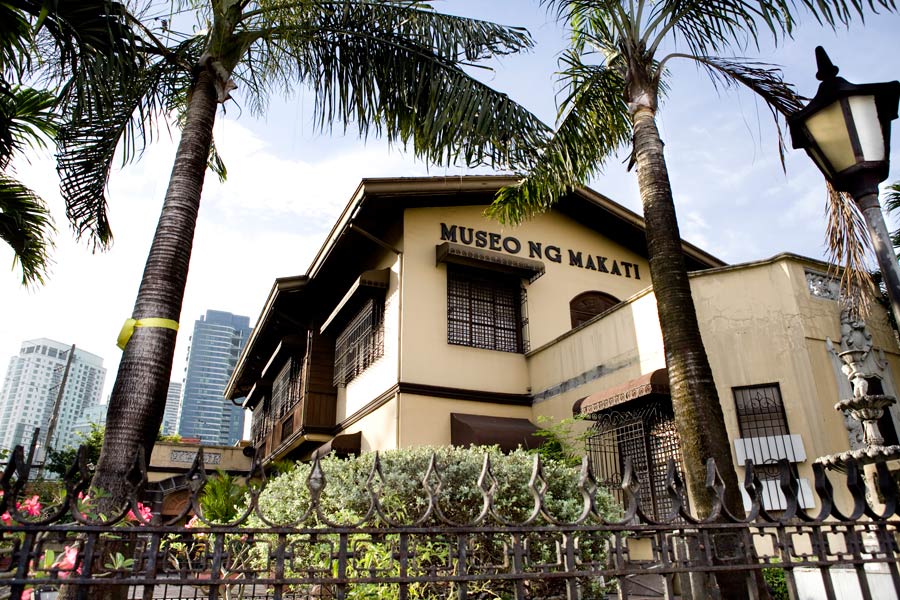
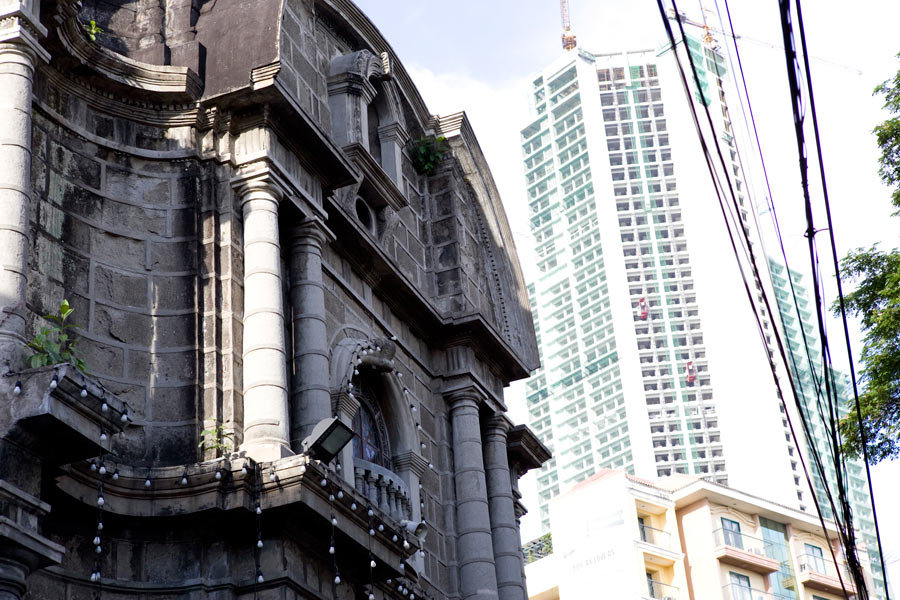
The Poblacion Heritage District Project
High-rise condominium projects in the city are changing the skyline of neighborhoods. The influences of emerging new lifestyles have not spared the Poblacion. Due to modernization and commercialization of the areas around it, the poblacion land use today is in flux. If the city is to hold on to its cultural identity and values, its few remaining heritage assets and traditions must be preserved and promoted.
Finding a solution is urgent due to the high development pressure on Makati land. A development program that can promote both cultural and socio-economic concerns is the solution. If Makati’s foremost heritage district can be redeveloped (with the goal of faithful restoration for adaptive reuse), it would be a more productive place especially for tourism-related activities that will improve its economy.
READ MORE: Iloilo sets the precedent for heritage CBD restoration
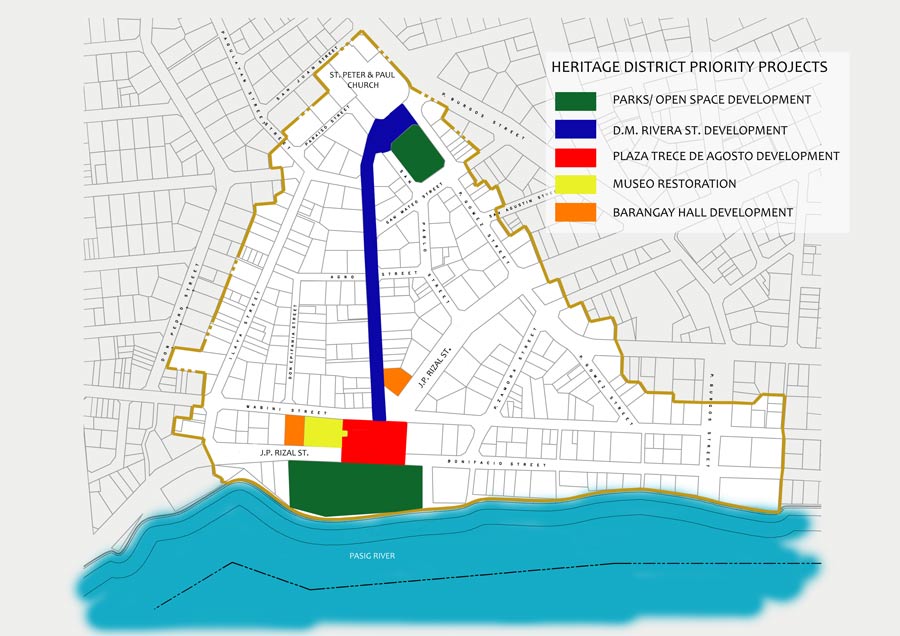
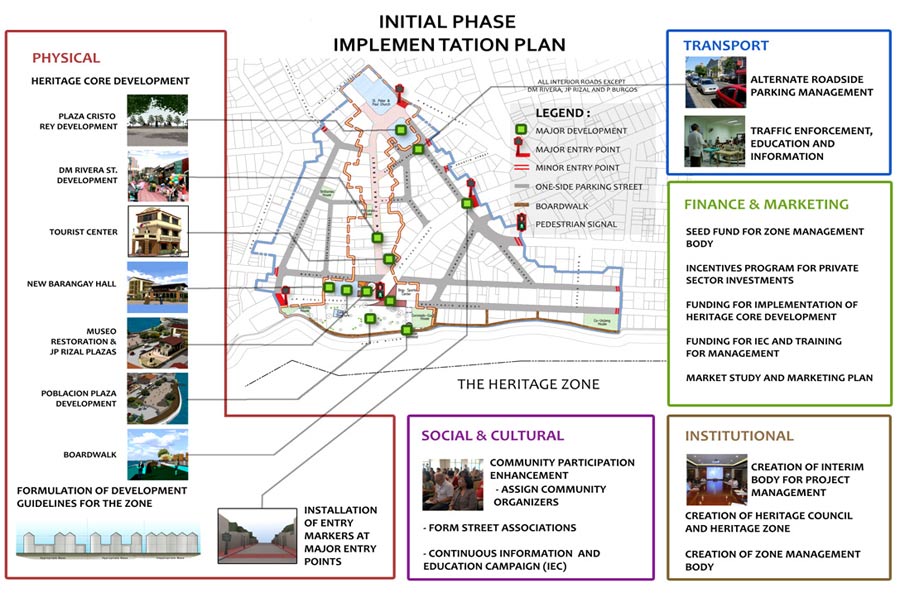
The Planning Approach
Makati City commissioned Consultants for Comprehensive Environmental Planning Inc. (CONCEP), an architecture and master planning firm, to prepare a heritage conservation plan and urban development study for the old Poblacion. The resulting study moved for the creation of a Heritage District based on the history of the town and its identified heritage structures. The study delineated a 6.6-hectare triangular shaped area in the poblacion for redevelopment. This area contains a combination of existing private and public sector properties. The significant structures are the St. Peter and Paul Church, the Museo, Poblacion Park, and several heritage houses.
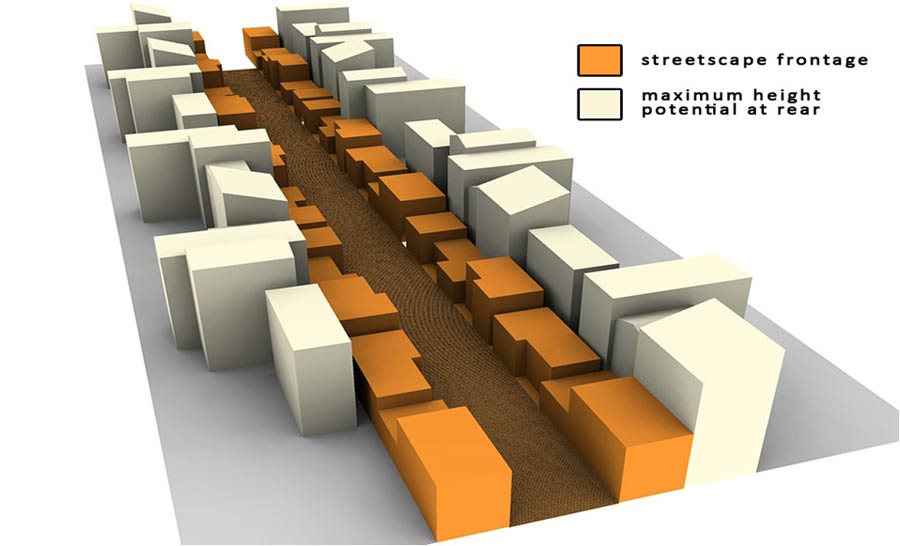
The city must employ adaptive reuse for the existing heritage buildings. To complement this, new developments will be encouraged to have architectural designs that are sensitive to the heritage structures and to the vision for the area. Aside from implementing the above policies, the city must undertake certain identified priority actions. The resulting physical improvements from these priority projects are expected to catalyze counterpart investments from the private sector.
One of these priority projects is converting D.M. Rivera St. into a pedestrian tourist route. Based on old photographs, the road from the church to the waterfront (D.M. Rivera St.) has apparently retained its path alignment. It is the strategic route that provides a physical connection between the tourism nodes (St. Peter and Paul Church, the Museo and Poblacion Park) envisioned for the project.
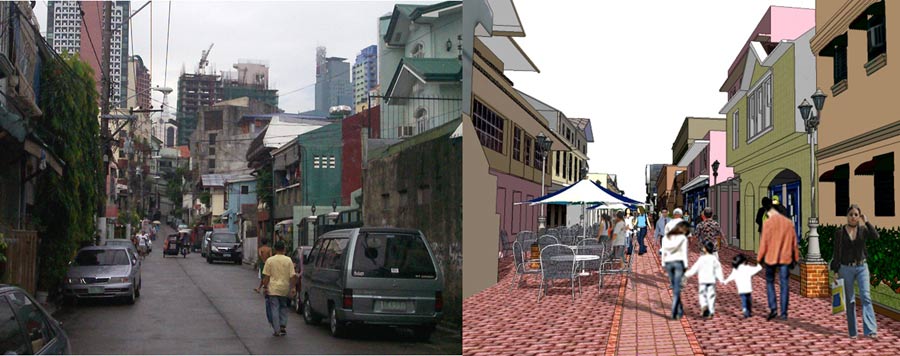
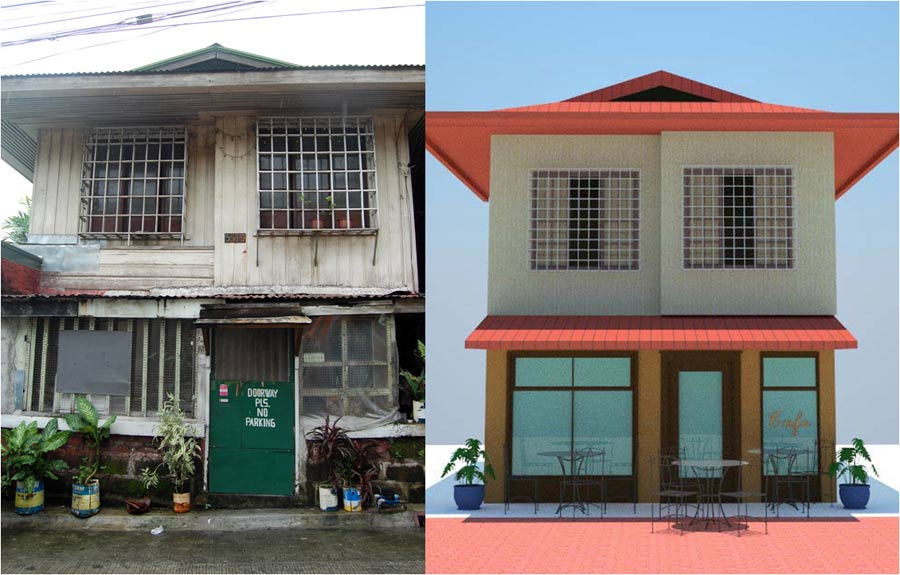
A pedestrianized D.M. Rivera Sreet and its streetscaping would be the natural centerpiece feature for the Heritage District project since it dramatically and spiritually connects the main features of the old town while promoting commerce. Other identified priority actions are the modernization of the Museo and park facilities.
Other Prospects
The Heritage District project increases in importance when its relationship to external areas of Makati is considered. Poblacion Park along the Pasig not only has a view of Metro Manila’s main watercourse but it can also be a scenic dock for boats traveling into the heart of Manila and even rustic towns around Laguna de Bay.
The redevelopment of the Pasig River is one of the national government’s priority projects. Once the Pasig River Ferry system facilities are improved and ferry trips made more regular, this dock at the edge of Poblacion Park can be a transit station serving Makati tourists who plan to visit the heritage districts of Manila. River travel from Makati to, say, Intramuros would surely be the more convenient way for tourists considering Metro Manila’s exasperating traffic situation.
READ MORE: New Pasig River Ferry System with new stations begins operations end of 2018
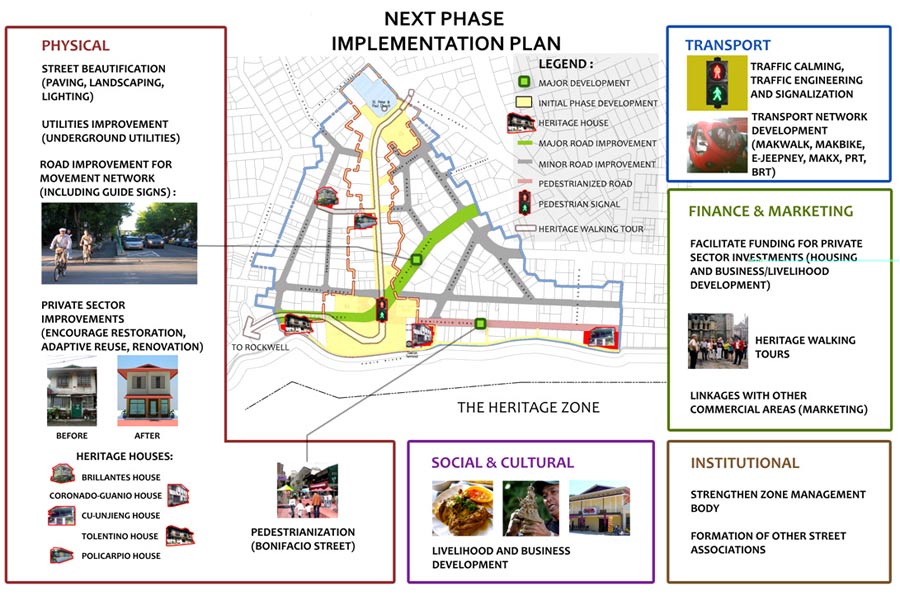
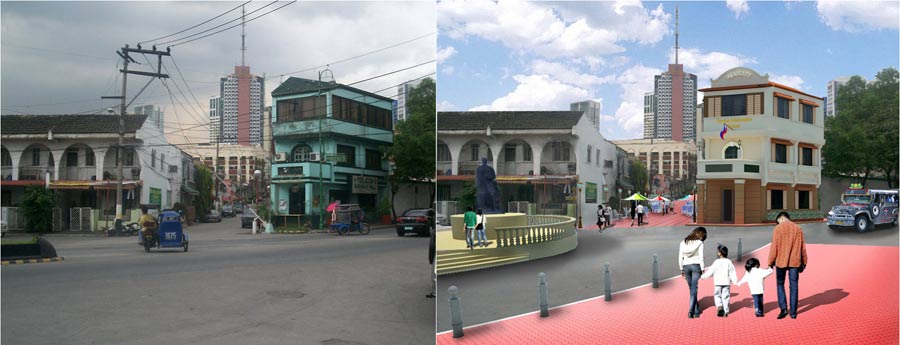
One other prospect to look forward to is the linkage with Mandaluyong. Mandaluyong is right across the Pasig River from Makati. The development of Mandaluyong into a high-density residential area is due to its central location that is contiguous with other cities (Manila, San Juan, Pasig City and Quezon City).
The direct connection of Mandaluyong (either via ferry crossing or via a proposed footbridge) to a commercialized Poblacion Park should be a boon for the Heritage District. This will provide an interesting new gateway into Makati that can improve commerce and provide a better economic outlook for the Heritage District.
The Stakeholders and external assistance
In general, the role of the city government will be the formulation of policies focused on the project, and the provision of infrastructure investments according to the identified priority actions.
The Heritage District master Plan for Makati Poblacion aims to improve the cultural, environmental and socio-economic condition of the neighborhood. This progressive development objective has drawn the interest of development-oriented foreign institutions. The Spanish Program for Cultural Cooperation of the Instituto Cervantes funded the Makati Poblacion cultural mapping project. The output of this project became a major basis for the identification of the Heritage District site and the tangible and intangible heritage assets of the Poblacion.
Metropolis, a world association of major metropolises, and its Bank of Cities Project (now known as Global Fund for Cities Development or GFCD), provided technical assistance for the first Makati Poblacion Heritage Conservation Workshop in July 2008 and a follow up planning workshop in July 2009.
Future
The preparation of the Poblacion heritage conservation plan with its accompanying strategy for implementation is the first step. The ratification of operating policies by the city council will be necessary to put the project on the ground. The recommended timeframe for project implementation consists of two phases, with the first phase to be addressed by the city over a period of three years.
While the city is committed to investments on public lands and buildings that it owns (parks, streets, the Museo, etc.), there is the challenge of encouraging the private sector—the owners of heritage houses and buildings—to restore and retrofit their buildings in line with the vision of the project.
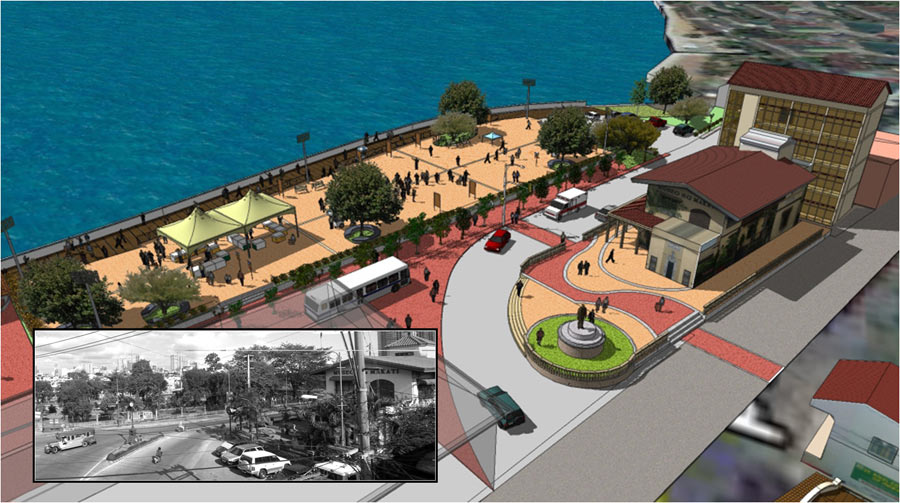
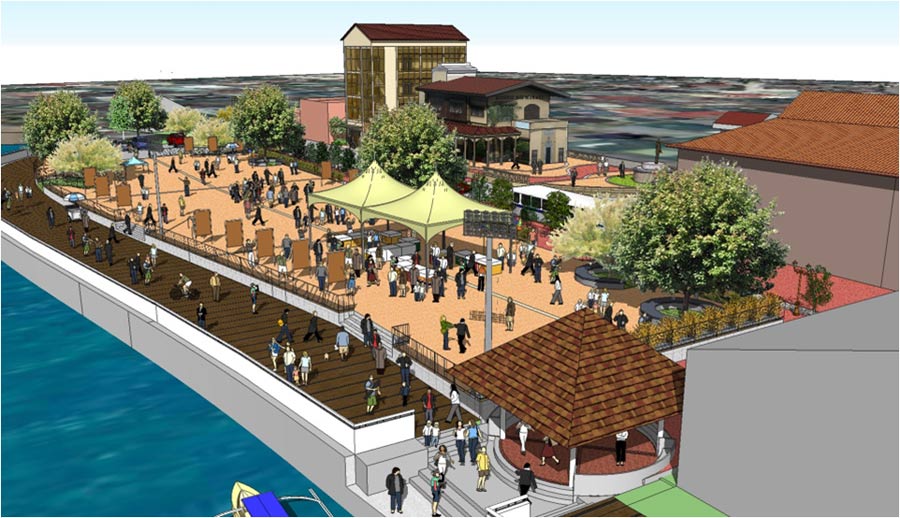
The St. Peter and Paul heritage church, the premier heritage building that is expected to play a major role in the Heritage District plan, for example, remains a private sector asset. Several public consultations were held during the course of preparing the study. These consultations substantively shaped the project development strategy.
Since the completion of the study, the city has started the activities for the implementation phase of the project. It has prioritized, and more importantly, allocated funds for two of the priority projects: the restoration of the Museo and the redevelopment of Poblacion Park. On the part of the private sector, restoration activity has already begun by the owner of one of the heritage houses (the Cu-unjieng house along A. Bonifacio St.).
The Heritage District project will need effective public-private cooperation and sustained support from city officials. If there is any city in the Philippines that can do justice to a heritage district plan, it is Makati. After all, Makati is the premier city of the country that initiated this plan and adopted it. More importantly, Makati City not only has the means, it also has shown in the past a remarkable will to plan for the future. ![]()
Original article first appeared in BluPrint Special Issue 1 2011. Edits were made for Bluprint online.
Photographed by Ed Simon
*Illustrations, diagrams, renderings, and archive photos were supplied by Consultants for Comprehensive Environmental Planning, Inc. (CONCEP), an architectural and master planning firm based in Makati. Leon Mayo is president and co-founder of CONCEP. More information about CONCEP’s work can be found at concepinc.com or by calling (2) 895-1812/895-3547. The group can be reached by email at [email protected].


